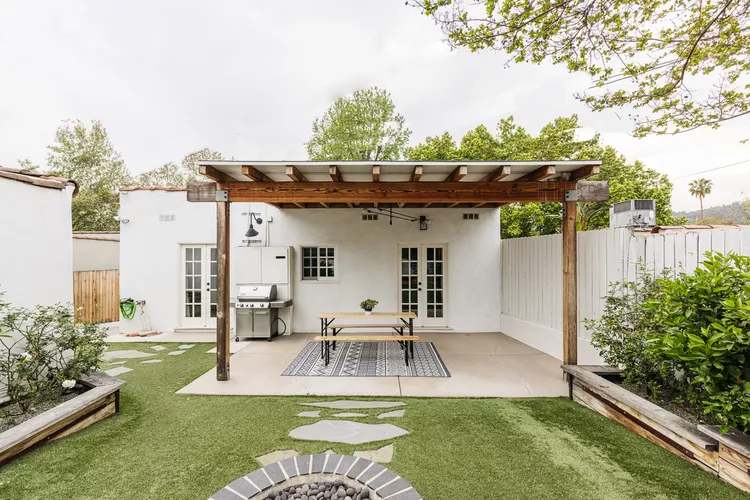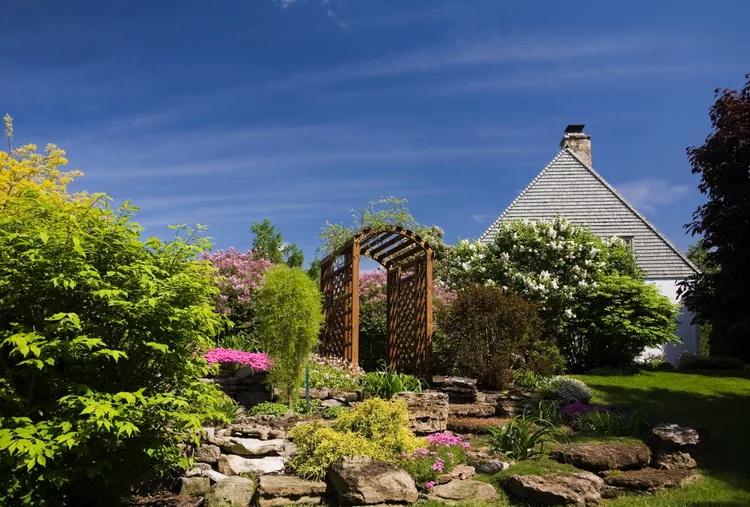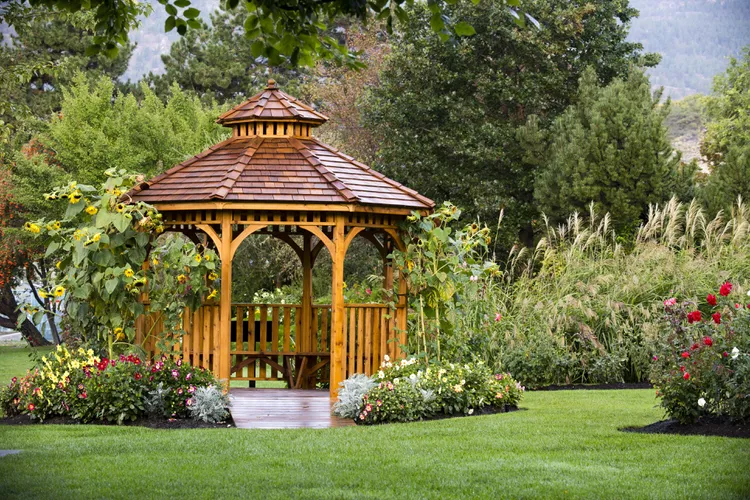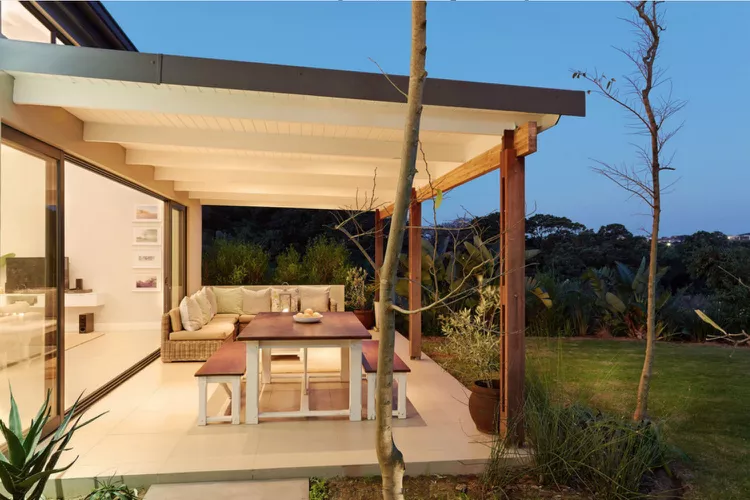A pergola is an exterior structure consisting of columns that support a roof truss consisting of purlins and rafters. This roof truss can be left open or covered to create an area protected from the elements. Pergolas can be freestanding or attached to the house.
To better understand the definition of a pergola, it is useful to compare and contrast it with other outdoor structures with which it is sometimes associated, including:
- Arbours
- Gazebos
- Trellises
- Lattice ( or “latticework”)
- Carports
Arbours vs. Pergolas
A gazebo is a landscape structure that is very similar to a pergola, but there are differences between the two. If we look at the subtleties, the following can be distinguished:
Garden Treehouses:
- are relatively simple structures that lack architectural flourishes such as masonry columns.
- are relatively small structures.
- Wear curved bows often at the top.
- Vinyl is increasingly being made in place of more traditional materials.
- Are freestanding (i.e. not attached to houses, although they can be attached to a fence, in which case they sometimes have a gate).
Pergolas, on the other hand, are usually larger structures, often in all dimensions (height, width and length). Sometimes, with a greater architectural treatment, they can have, for example, masonry columns. Their upper part is more often flat.
Traditional pergola design originates from the large masonry pergolas of the Italian Renaissance. However, the term “pergola” is now used more loosely and includes wooden structures (as shown). Pergolas are often attached to houses to form an outdoor living space that essentially functions as an extension of the interior of the home.
Answering the question, what is a pergola? Some experts would distinguish bell towers from bell towers, noting that the columns of the first form a kind of “pilaster”. For example, landscape architect Cynthia Cash writes, “The main difference between a ‘gazebo’ and a ‘pergola’ is that a tree is a free-standing structure (also used to support vines), while a pergola is a long linear structure. Garden path.”
Arbours and Carports vs. pergolas
A related wooden structure is a gazebo. But the gazebo always has a closed roof, which is not the case with pergolas. Many (but not all) gazebos are distinguished from gazebos by:
- Raised floor
- Rounded shape
A “carriage house” is a structure defined more by purpose than by method of manufacture. To protect the car at home, carports are used instead of the more expensive option: the garage. The basic carport is a roof resting on pillars. But we have seen more elaborate carports, which are basically pergolas chosen for car storage.
Vines in pergolas
Pergolas, trellises, trellises and trusses have traditionally been used to support vines. A trellis is a portable frame designed to support plants such as vines and climbing rose bushes. It can be made of wood, metal or vinyl.
Fun Fact
The words “trellis” and “trellis” overlap, but the design of the latter is more closely related to a cross or square pattern.1 Trellis are often glued to the sides of a gazebo or pergola so that vines can be climbed.
Vines can form a canopy over the pergola, providing shade in the summer. To do this, choose a large and vigorous vine, for example:
- Dutch pipe
- Virginia climber
- Hardy kiwi
- Climbing hydrangea
- Wisteria
- Bougainvillea
But to have perfect shade and protection from the rain, some people cover their Wood pergolas. Sometimes you’ll see fibreglass as a cover, but more expensive homeowners may be interested in retractable shades.





